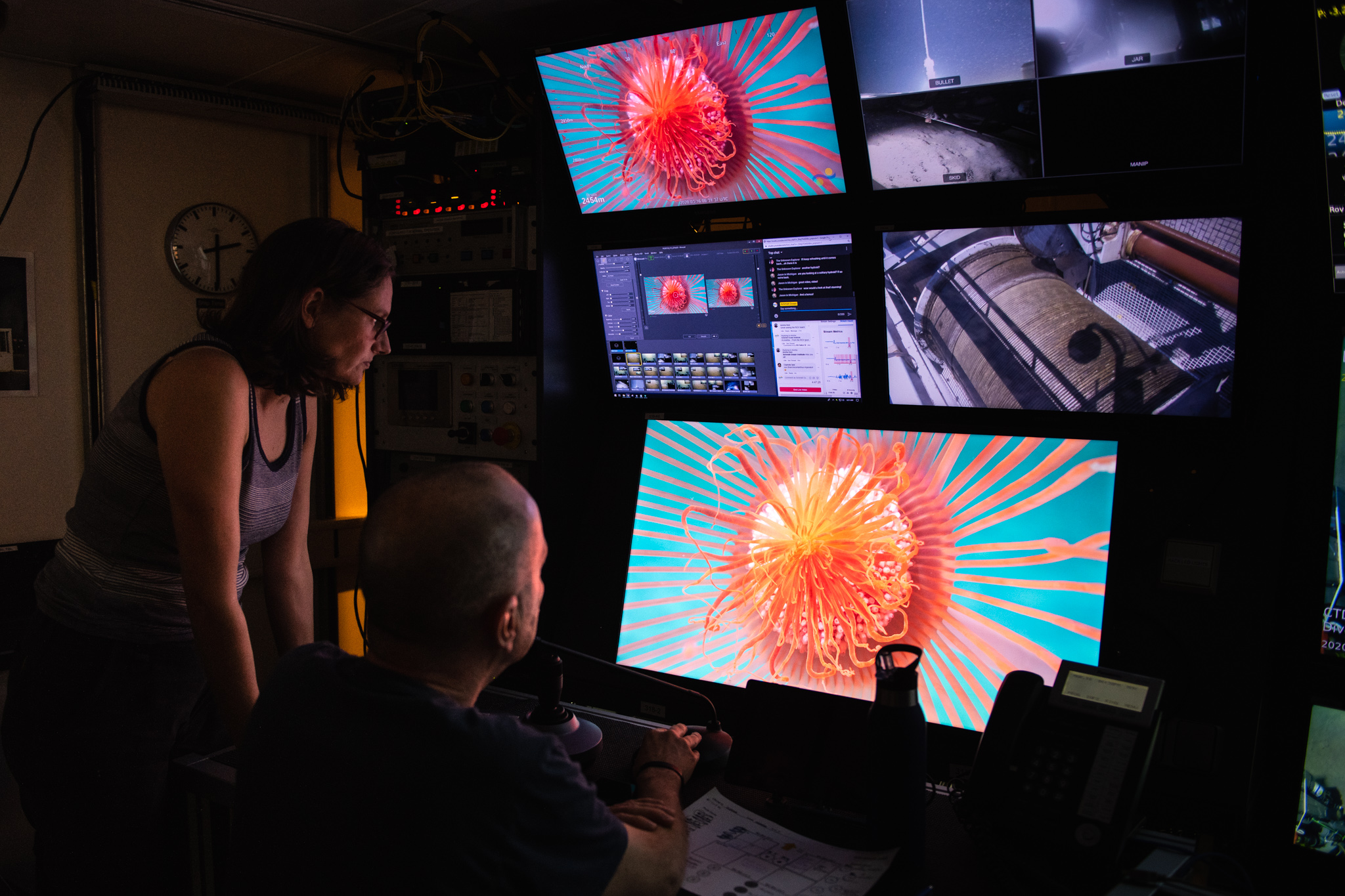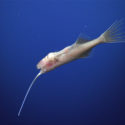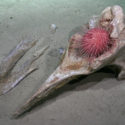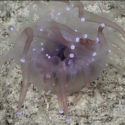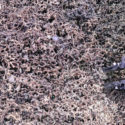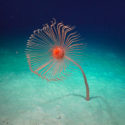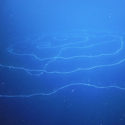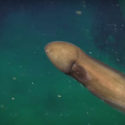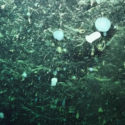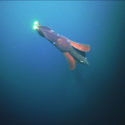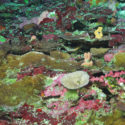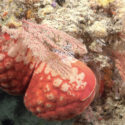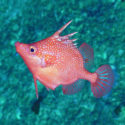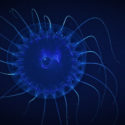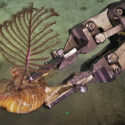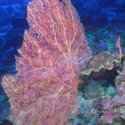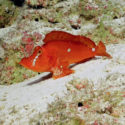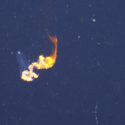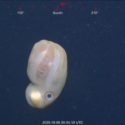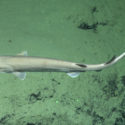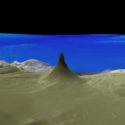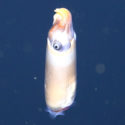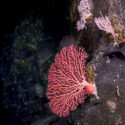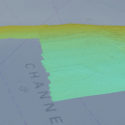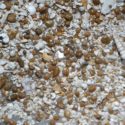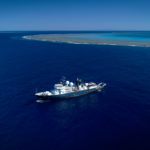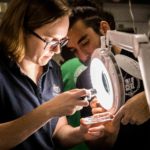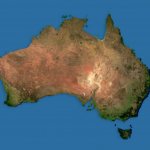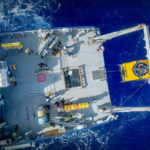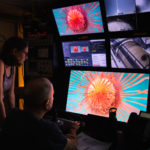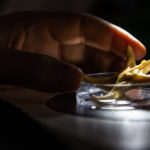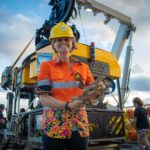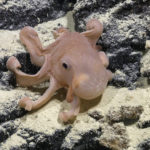This year SOI was part of many new findings, observations, and paths to understanding. Here are some of the most outstanding discoveries in 2020.
Whipnose Anglerfish (Gigantactinidae sp.)
Dive 312 (Jan 27, 2020) | Bremer Canyon
The recording of this fish was the first time the genus was reported in Australia.
Natural Whale Fall
Dive 315 (Jan 31, 2020) | Bremer Canyon
A discovered whale fall (sunken whale carcass) was brought to the surface and contained numerous organisms, some of which may be new species.
Solitary Cup Coral
Dive 318 (Feb 8, 2020) | Bremer Canyon
Originally found in the Southern Ocean around Antarctica, the discovery of this coral off the West Coast of Australia demonstrates the influence of the Southern Ocean in some of Australia’s deep marine ecosystems.
Pedestal-Shaped Coral Graveyard
Dive 327 (Feb 19, 2020) | Perth Canyon
Large coral graveyards like this pedestal-shaped one offer insight into environmental change over time and the history of Earth’s climate.
Giant Hydroids (Branchiocerian thus sp.)
Dive 337 (Mar 15, 2020) | Cape Range Canyon
This giant hydroid, found at 2497 meters depth, was over a meter tall. Giant hydroids have never been observed in Australian waters before, so this one might be a new species.
Siphonophore (Apolemia sp.)
Dive 336 (Mar 16, 2020) | Cape Range Canyon
This siphonophore – recorded by ROV SuBastian is – thought to be the longest sea-creature in the world at 45 meters in length.
Faceless Cusk Eel (Typhlonus nasus)
Dive 341 (Mar 20, 2020) | Cape Range Canyon
The sighting of this eyeless fish was the deepest record of it, as well as the first time it was observed outside of Queensland and on the western side of the continent.
Glass Sponge Communities
Dive 342 (Mar 20, 2020) | Cape Range Canyon
Many old and new sponges were found, indicating a rich diversity and history in the area.
Taning’s Octopus Squid (Taningia danae)
Dive 343 (Mar 21, 2020) | Cape Range Canyon
This was the first observation of the species in Western Australia.
Leptoseris Coral Fields
Dive 365 (Jun 2, 2020) | South Diamond Islet
Leptoseris Coral Fields are well characterized in Hawaii but had never been observed in the Coral Sea until these dives.
Pumpkin Star (Astrostarkus)
Dive 366 (Jun 6, 2020) | Lihou Reef
Identifying this particular species of “pumpkin star” (first described in 2004) during an ROV dive resulted in a substantial range extension for the species.
Deepwater Spike Fish (Hollardia goslinei)
Dive 368 (Jun 6, 2020) | Lihou Reef
This deepwater spike fish was thought to be native to Hawaii, but footage of the fish in Australian waters extended it significantly further from its original “home range.”
Midwater Jelly Survey
Dive 374 (Aug 6, 2020) | Cairns Seamount
The first survey conducted of midwater jellies in the South Pacific.
New Black Coral Species
Dive 376 (Aug 7, 2020) | Herald Cays
Samples were taken of black coral and may reveal they belong to the family schizopathidae, but DNA sequencing may reveal they belongs to an entirely different family.
Deep-Sea Scleractinian & Soft Corals
Dive 390 (Aug 21, 2020) | Osprey Reef
The deepest specimens of soft and stony corals ever collected in the Coral Sea.
Walking Scorpionfish (Rhinopias agroliba)
Dive 392 (Aug 24, 2020) | Tregrosse Reefs
The first-ever recording of this rare species of walking scorpionfish in Australia significantly extended its range.
Fiery Siphonophore
Dive 393 (Sep 30, 2020) | Northeast Fraser Island
This brilliant, bright orange siphonophore is thought to potentially be a new species.
Dumbo Octopus (Grimpoteuthis sp.)
Dive 395 (Oct 5, 2020) | Noggin Canyon
The team spotted a dumbo octopus that was displaying highly unusual behavior. Researchers are still unsure what was happening, though many speculate it could have been predating upon another octopus or holding onto a mate.
Short-Tail Catshark (Parmaturus bigus)
Dive 399 (Oct 17, 2020) | Southern Small Detached Reef
The short-tail catshark is one of the rarest species of sharks in the world, known from a single specimen collected from the southern Coral Sea. We documented three new specimens of this shark throughout the year.
500m Detached Reef
Dive 401 (Oct 25, 2020) | Southern Detached Reef
A geologic structure of this kind and size had not been discovered in the Great Barrier Reef for the past 120 years.
Ram’s Horn Squid (Spirula spirula)
Dive 402 (Oct 26, 2020) | Wreck Bay Plunge Pool
The Ram’s Horn Squid is well known for its spiral shell, that washes up on beaches around the world. However, no scientist has seen this animal alive in its natural environment until ROV SuBastian recorded footage of it during a midwater dive.
New Deep Sea Coral Ecosystems
Dive 312-331 (Overall Expedition) | Perth, Bremer, & Leeuwin Canyons
Multiple new types of deep-sea coral ecosystems were uncovered in Western Australia throughout the expedition.
Capricorn Ridge
Capricorn Ridge
R/V Falkor and team fully mapped a distinctive cliff feature at approximately 200 meters depth; it is thought to be the southernmost extent of the ~20 million-year-old base of the Great Barrier Reef.
Presence of Ooids
Capricorn Channel
The presence of ooids (a sediment grain made from calcium carbonate) in deep water provides insight into the ancient geological makeup of the Great Barrier Reef and gives insight into historic sea levels.

